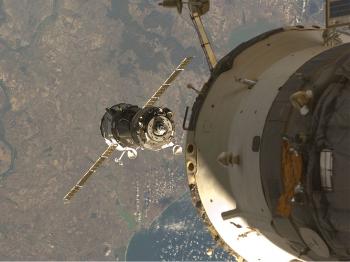The video stream of Earth and the exterior of the station are sent from cameras mounted outside the laboratory complex, orbiting 220 miles above Earth at a speed of 17,500 miles an hour.
The video is transmitted to the ground primarily while the astronauts are sleeping, usually from about 1 p.m. to 1 a.m. CDT. When live feeds are not available, a map showing the current location and path of the station will be streamed from NASA’s Mission Control in Houston.
The streaming video will include audio communications between Mission Control and the astronauts, when available. Also, during times when the space shuttle is docked to the station, the stream will include video and audio of those activities.
The International Space Station is a unique partnership between the space agencies of the United States, Russia, Japan, Canada, and Europe. Construction began in 1998 and will be completed in 2010. Eighteen crews have lived aboard the orbiting complex since 2000, including the current crew of three. Station residents have conducted scientific experiments and gathered data to help assist future missions to the moon and Mars.
To view the streaming station video and for more information about the station and its crew you can visit www.nasa.gov/station, and to find out when the station will be visible over your city go to www.jsc.nasa.gov/sightings.






Friends Read Free